Racism and Discrimination in the Modern World
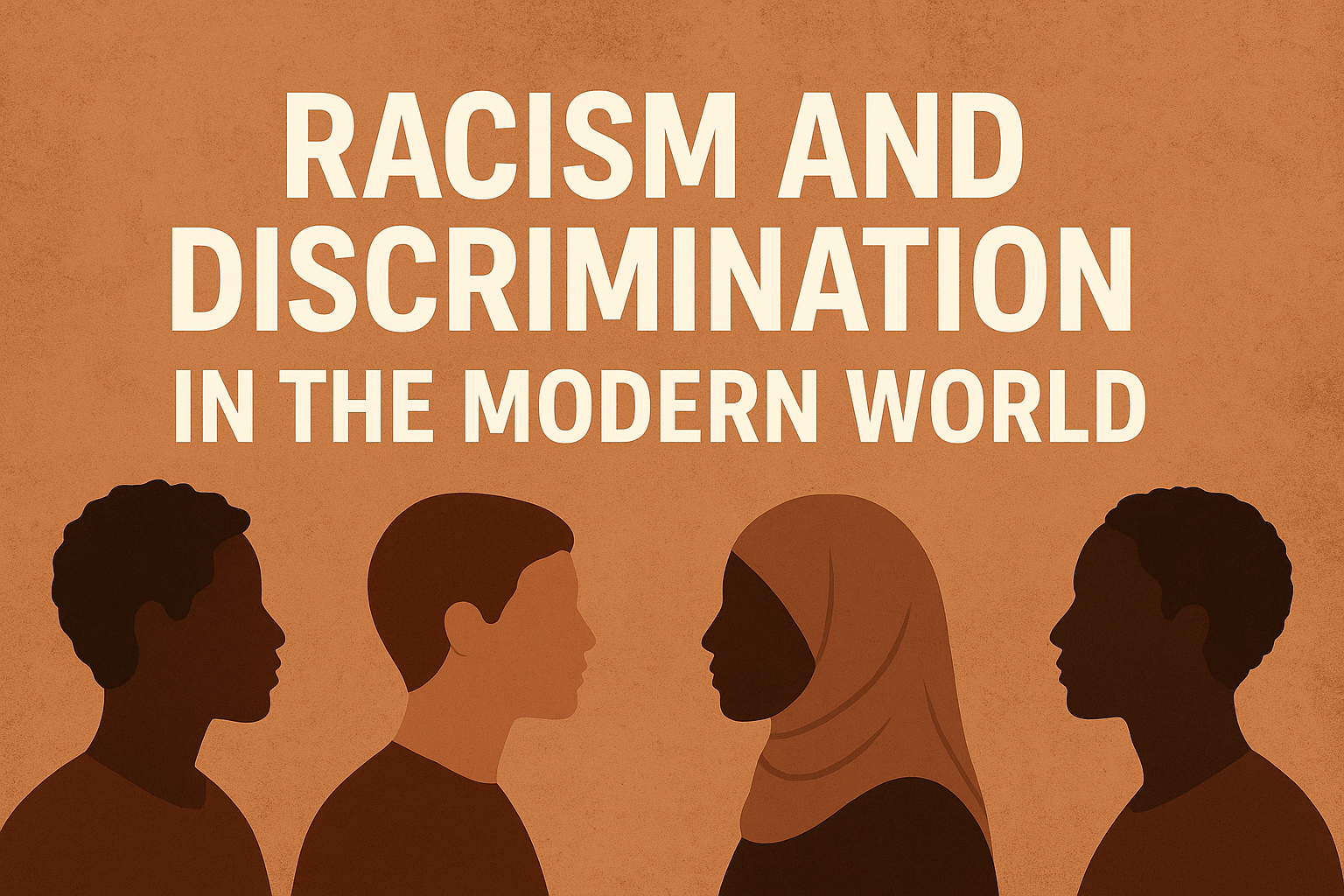
Introduction
In today’s interconnected world, humanity has made significant progress in technology, education, and communication. However, despite these advancements, racism and discrimination remain persistent social issues. From the workplace to schools, from social media to daily interactions, individuals continue to experience prejudice based on race, ethnicity, religion, or cultural background. Addressing these problems is crucial for building inclusive societies where diversity is celebrated, not rejected.
Understanding Racism and Discrimination
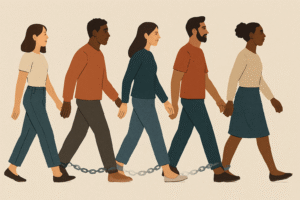
Racism refers to prejudice, discrimination, or hostility directed at someone because of their race or ethnicity. Discrimination, on the other hand, extends beyond race and can include gender, religion, disability, and socioeconomic status. Both create barriers to equality and limit opportunities for millions of people worldwide.
Historically, racism has roots in colonialism, slavery, and segregation. Although many countries have passed laws against discriminatory practices, the mindset behind these behaviors still lingers. This makes racism not just a legal issue but also a social and moral challenge.
The Modern Face of Racism
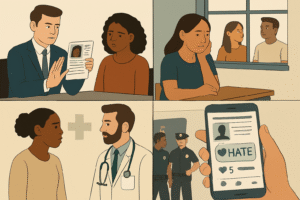
Racism is no longer always overt or obvious. In many cases, it takes on subtle forms, often referred to as systemic or institutional racism. Some examples include:
-
Workplace Inequality: Candidates being rejected because of their names, skin color, or accents.
-
Education Barriers: Minority students receiving fewer opportunities and resources than their peers.
-
Healthcare Disparities: Ethnic groups being underserved in hospitals and clinics.
-
Racial Profiling: Police and authorities unfairly targeting specific races.
-
Online Hate Speech: Social media amplifying racial slurs, stereotypes, and harassment.
These modern forms of racism may be less visible than in the past, but they are equally damaging.
Global Examples
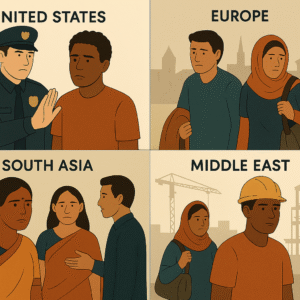
-
United States – Despite civil rights movements, racial inequality still affects African Americans and other minorities in areas such as policing, education, and employment.
-
Europe – Refugees and immigrants from the Middle East and Africa often face hostility and exclusion.
-
South Asia – Discrimination occurs due to caste, ethnicity, and religion, especially against minority groups.
-
Middle East – Migrant workers often face unfair treatment, poor working conditions, and limited legal protection.
These examples show that racism is not confined to one part of the world — it is a global issue requiring a global response.
Consequences of Racism and Discrimination
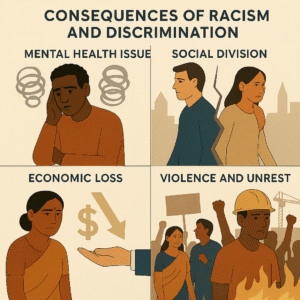
The impact of racism extends beyond the individual to society at large. Some of the consequences include:
-
Mental Health Issues – Victims often suffer from anxiety, depression, and low self-esteem.
-
Social Division – Discrimination creates mistrust and weakens national unity.
-
Economic Loss – Excluding people from opportunities means wasted potential and reduced productivity.
-
Violence and Unrest – In extreme cases, racism fuels protests, riots, and even wars.
Clearly, racism is not only unjust but also harmful to progress and peace.
Combating Racism and Discrimination
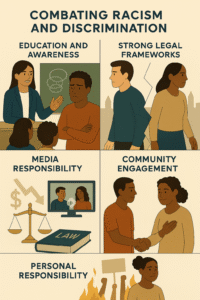
Solving this issue requires joint efforts from governments, communities, and individuals. Some important steps include:
-
Education and Awareness
Schools and universities should promote diversity and teach the value of respect and equality from an early age. -
Strong Legal Frameworks
Governments must implement strict anti-discrimination laws and ensure equal opportunities in all sectors. -
Media Responsibility
Media platforms should avoid stereotypes and instead highlight positive stories of diversity and inclusion. -
Community Engagement
Dialogue between different groups can break down stereotypes and reduce prejudice. -
Personal Responsibility
Each individual should reflect on their behavior, speak out against racism, and treat others with fairness.
Conclusion
Racism and discrimination continue to be major challenges in the modern world. While laws and policies have made progress, real change requires a shift in attitudes and behaviors. Societies must embrace diversity as a strength rather than a threat. Only by fostering respect, equality, and inclusion can we move towards a world where every individual is valued for their humanity, not judged by their identity.
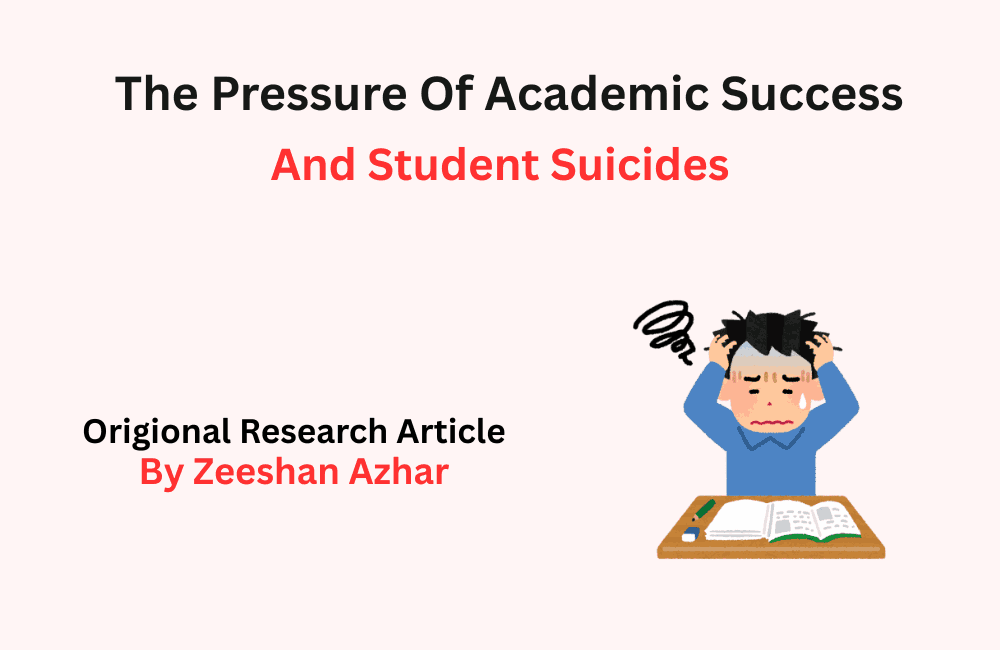
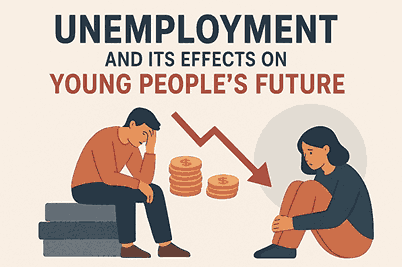
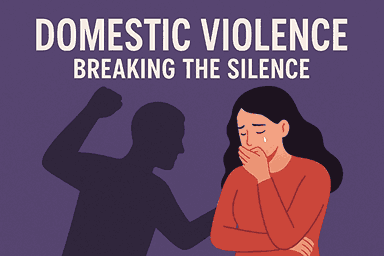
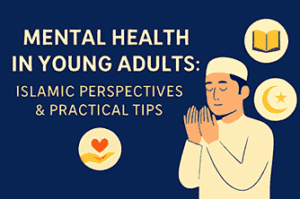
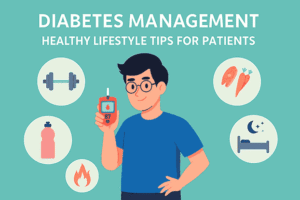
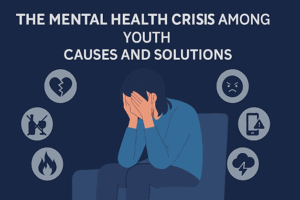
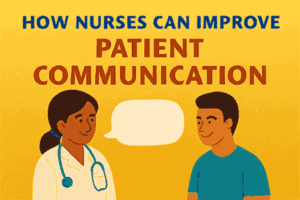

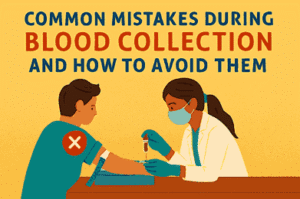
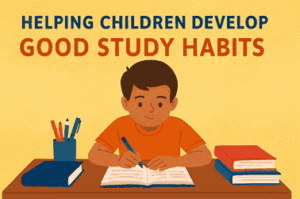
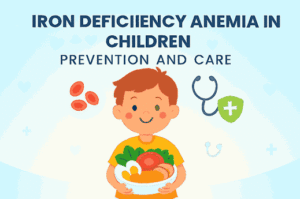

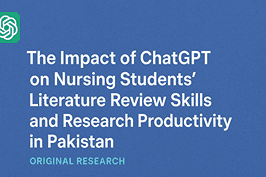
Post Comment